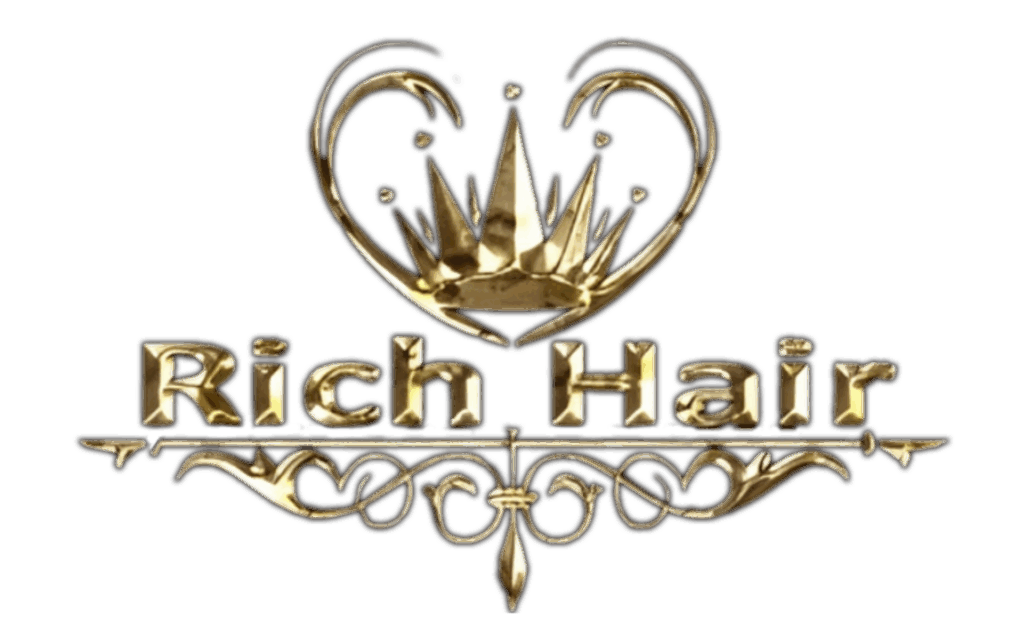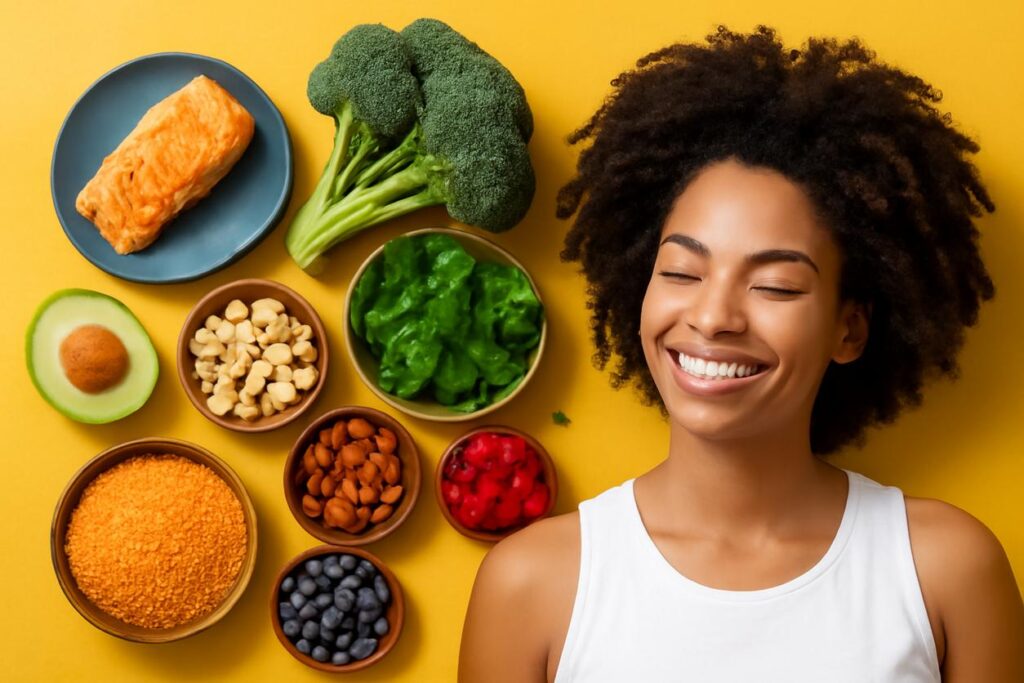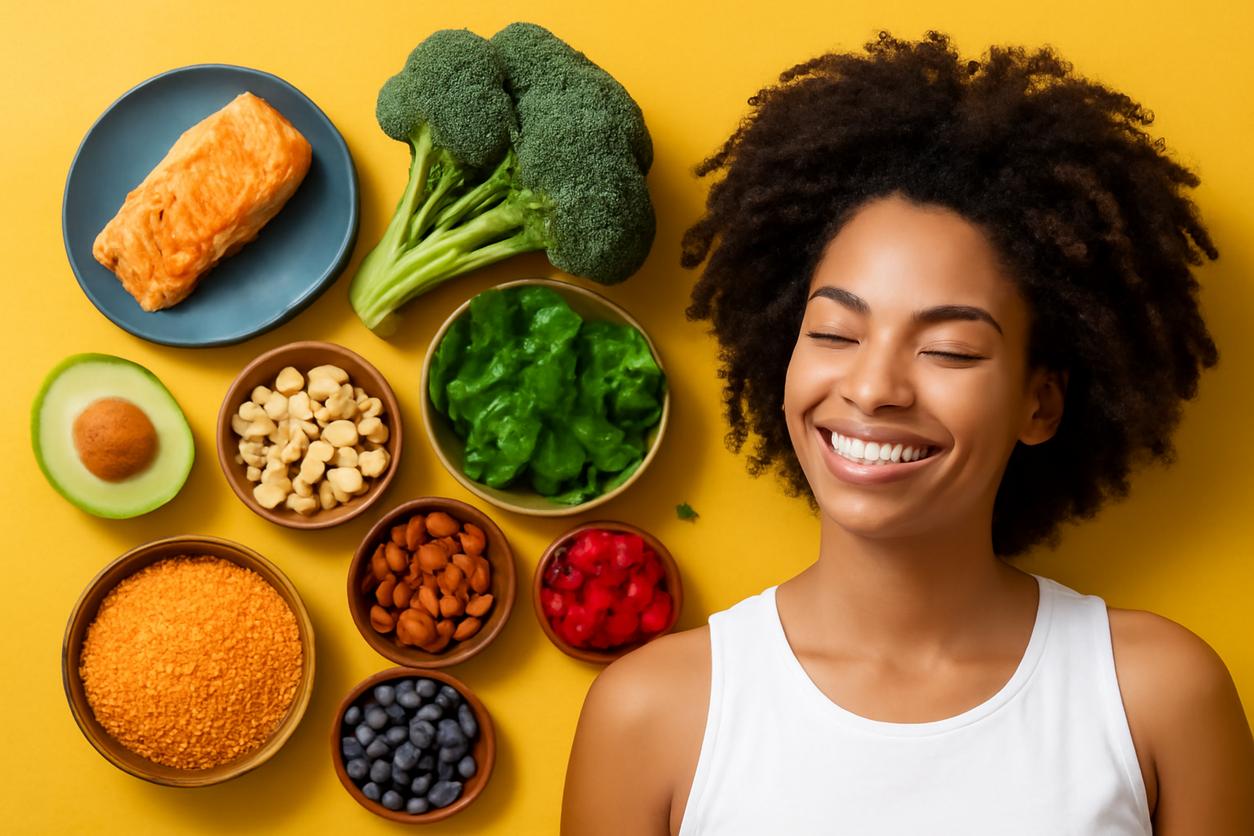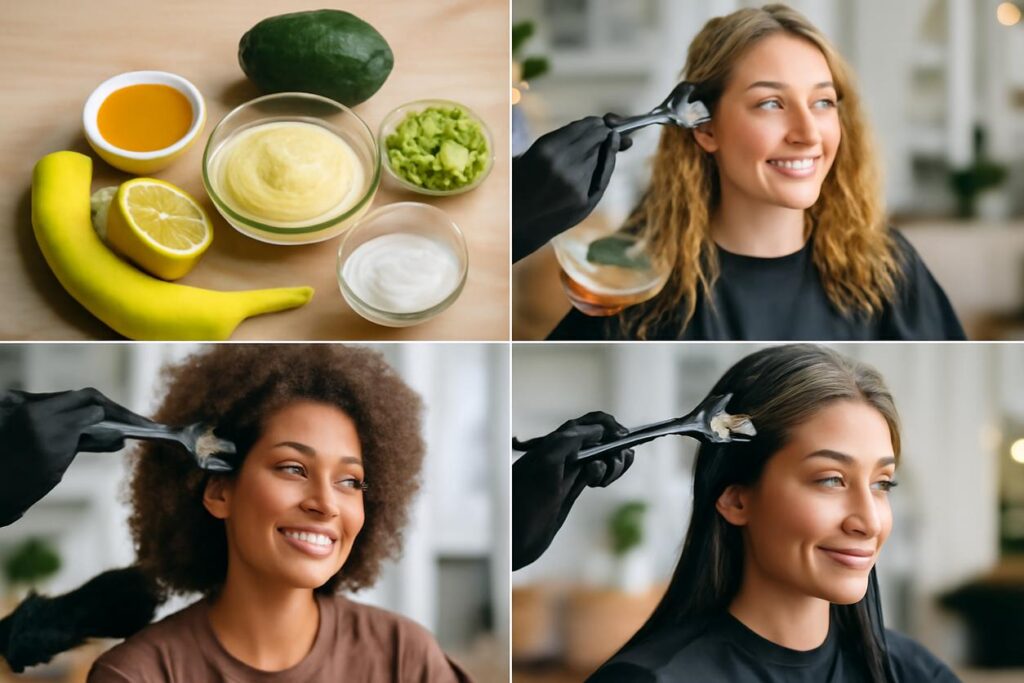Introduction: Why Nutrition Shapes Your Curls
Welcome to the ultimate guide to curly hair nutrition. If you have ever wondered why your curls have good days and bad days, despite a perfect product routine, the answer might just be on your plate. While conditioners, gels, and creams work from the outside, true, lasting hair health is built from within. The food you eat provides the essential building blocks your body needs to construct strong, elastic, and vibrant hair strands. This is especially true for curly hair, which has a unique structure that makes it more susceptible to dryness and breakage.
This guide will move beyond surface-level tips and delve into the science of how specific nutrients directly impact the biology of your curls. We will explore the vitamins, minerals, and macronutrients that form the foundation of healthy hair and provide practical, actionable strategies—including meal plans and recipes—to help you feed your curls what they truly need to thrive in 2025 and beyond.
How Curl Biology Influences Nutrient Needs
To understand curly hair nutrition, we first need to understand the curl itself. Unlike straight hair, which grows from a round follicle, curly hair emerges from a flat, oval-shaped follicle. This asymmetrical shape causes the hair strand to curve as it grows.
The Unique Structure of a Curl
- The Cuticle Layer: The twists and turns of a curly hair strand mean the protective outer layer, the cuticle, doesn’t lie flat. These raised cuticles are like open doors, allowing moisture to escape easily and making curls prone to dryness and frizz.
- Sebum Distribution: The natural oils (sebum) produced by your scalp have a harder time travelling down the winding path of a curly strand. This often leads to oily roots and dry, brittle ends.
- Structural Weak Points: Every bend in a curl is a potential point of weakness where breakage can occur.
Because of this unique biology, curly hair has a higher demand for nutrients that promote moisture retention, strength, and elasticity. A diet lacking in these key components will quickly manifest as dullness, frizz, and increased breakage.
Key Nutrients for Curl Strength and Elasticity
Your hair is primarily made of a protein called keratin. To build strong keratin, your body requires a balanced diet rich in specific macro and micronutrients. Think of these as the construction crew for your curls.
Protein: The Master Builder
Since hair is protein, consuming enough is non-negotiable. Your body breaks down dietary protein into amino acids, which are then used to build new proteins like keratin.
- Key Sources: Lean meats (chicken, turkey), fish, eggs, dairy products, legumes (lentils, chickpeas), tofu, and quinoa.
Healthy Fats: The Moisture Sealant
Omega-3 fatty acids are crucial for scalp health. They help nourish the hair follicle and support the production of sebum, the body’s natural hair conditioner.
- Key Sources: Fatty fish (salmon, mackerel, sardines), avocados, nuts (walnuts), and seeds (flaxseeds, chia seeds).
Vitamins and Minerals: The Support Crew
- Iron: Essential for carrying oxygen to your hair follicles. A deficiency can disrupt the hair growth cycle. Find it in red meat, spinach, lentils, and fortified cereals.
- Zinc: Plays a vital role in hair tissue growth and repair. It also helps keep the oil glands around the follicles working properly. Oysters, beef, pumpkin seeds, and lentils are excellent sources.
- Vitamin C: A powerful antioxidant that helps protect against damage from free radicals. It is also critical for producing collagen, a protein that strengthens hair. Get your dose from citrus fruits, bell peppers, strawberries, and broccoli.
- Biotin (Vitamin B7): Famous for its role in hair health, biotin is essential for keratin production. It is found in eggs, almonds, salmon, and sweet potatoes.
- Vitamin E: Another potent antioxidant that can help support a healthy scalp and prevent oxidative stress. Sunflower seeds, almonds, spinach, and avocados are rich in Vitamin E.
Foods to Prioritise and Foods to Limit for Curls
A successful curly hair nutrition plan is as much about what you include as what you avoid. Focusing on whole, nutrient-dense foods provides the fuel your hair needs, while limiting certain items can prevent inflammation and nutrient depletion.
Foods to Fill Your Plate With
- Eggs: A powerhouse of protein and biotin.
- Berries: Loaded with Vitamin C and antioxidants.
- Spinach: Packed with folate, iron, and Vitamins A and C.
- Fatty Fish: The best source of omega-3 fatty acids.
- Sweet Potatoes: A great source of beta-carotene, which the body converts to Vitamin A, promoting sebum production.
- Avocados: An excellent source of Vitamin E and healthy fats.
- Nuts and Seeds: Deliver a variety of nutrients, including zinc, Vitamin E, and omega-3s.
Foods to Limit or Avoid
- High-Sugar Foods: Sugar can cause inflammation and may lead to hormonal imbalances that can affect hair health.
- Highly Processed Foods: These often lack the essential nutrients your hair needs and can contribute to overall inflammation.
- Excessive Alcohol: Alcohol is dehydrating and can deplete your body of key nutrients like zinc, which is vital for healthy hair.
Practical Meal Ideas for Vibrant Curl Health
Eating for your curls doesn’t have to be complicated. Here are some simple, nutrient-packed ideas to get you started.
Breakfast Boosters
Start your day with protein and healthy fats. Try a spinach and feta omelette, Greek yogurt with berries and chia seeds, or a smoothie with protein powder, avocado, and leafy greens.
Power Lunches
Focus on balanced meals. A large salad with grilled chicken or chickpeas, plenty of colourful vegetables, and an olive oil-based dressing is perfect. A quinoa bowl with black beans, corn, avocado, and a squeeze of lime is another excellent choice.
Nourishing Dinners
Centre your dinner around a quality protein source. Baked salmon with roasted sweet potatoes and steamed broccoli, or a hearty lentil soup with whole-grain bread, provides a fantastic mix of curl-loving nutrients.
Quick Meal Concepts for Different Curl Types
While all curls benefit from the same core nutrients, you can tailor your meals to address the specific needs of your curl type.
| Curl Type | Focus | Quick Meal Concept |
|---|---|---|
| Wavy (Type 2) | Lightweight nutrition that won’t weigh hair down. | Grilled Chicken Salad: A bed of mixed greens with grilled chicken strips, cucumber, tomatoes, bell peppers, and a light vinaigrette. Provides protein without heavy oils. |
| Curly (Type 3) | Moisture and elasticity. | Salmon and Quinoa Bowl: Pan-seared salmon (rich in omega-3s) served over fluffy quinoa with a side of steamed asparagus. This meal is packed with healthy fats and protein for bounce. |
| Coily (Type 4) | Intense moisture, sealing, and strength. | Sweet Potato and Lentil Stew: A rich, hearty stew made with lentils (iron and protein), sweet potatoes (Vitamin A), and spinach. The combination supports strength and sebum production for brittle strands. |
7-Day Sample Meal Plan for Curly Hair Nutrition
Here is a sample one-week plan to inspire your journey towards better curly hair nutrition. Remember to drink plenty of water throughout the day!
| Day | Breakfast | Lunch | Dinner | Snack |
|---|---|---|---|---|
| Monday | Scrambled eggs with spinach | Quinoa salad with chickpeas and veggies | Baked salmon with roasted asparagus | Handful of almonds |
| Tuesday | Greek yogurt with berries and walnuts | Leftover salmon salad | Chicken stir-fry with brown rice | Apple with peanut butter |
| Wednesday | Oatmeal with chia seeds and fruit | Lentil soup | Turkey meatballs with zucchini noodles | A hard-boiled egg |
| Thursday | Smoothie with protein powder and avocado | Leftover turkey meatballs | Beef and broccoli stir-fry | Orange |
| Friday | Whole-grain toast with avocado and egg | Tuna salad sandwich on whole-grain bread | Homemade black bean burgers on lettuce wraps | Small bowl of berries |
| Saturday | Pancakes made with whole wheat flour and berries | Large chicken Caesar salad (easy on the dressing) | Grilled steak with a side of sweet potato fries | Carrot sticks with hummus |
| Sunday | Vegetable omelette | Leftover steak and veggies | Roast chicken with roasted root vegetables | Handful of walnuts |
Supplements: When They Help and How to Choose
While a food-first approach is always best, supplements can be beneficial if you have a confirmed nutrient deficiency. It is crucial to remember that more is not better; excessive amounts of certain vitamins can be harmful.
When to Consider Supplements
If you suspect a deficiency (e.g., experiencing significant hair loss, fatigue), consult a healthcare professional. They can perform blood tests to identify any shortfalls in nutrients like iron, vitamin D, or zinc. Vegans and vegetarians may also need to consider a B12 supplement, as it is primarily found in animal products.
How to Choose Wisely
If a supplement is recommended, look for brands that have been third-party tested for quality and purity. Avoid “hair gummies” that are high in sugar and low in effective dosages. Focus on single-ingredient supplements to target a specific deficiency rather than a proprietary blend.
Daily Habits that Support Nutrition for Curls
Your diet is the star of the show, but these supporting habits can make a huge difference.
- Hydration is Key: Water is essential for transporting nutrients to your cells, including your hair follicles. Aim for 8 glasses a day. Dehydration can lead to dry, brittle hair.
- Mindful Eating: Pay attention to your body’s hunger and fullness cues. Eating slowly can improve digestion and nutrient absorption.
- Consistency Over Perfection: Don’t stress about a single “unhealthy” meal. It is the overall pattern of your diet that matters most for long-term hair health.
Common Curly Hair Nutrition Myths and the Evidence
The world of hair care is full of misinformation. Let’s debunk some common myths with evidence.
- Myth 1: You can “feed” hair directly with food-based masks.
Fact: While masks with ingredients like avocado or yogurt can provide temporary moisture and shine to the hair’s surface, they cannot nourish the follicle. True nutrition happens internally when nutrients are absorbed into your bloodstream and delivered to the scalp. Scientific studies on nutrition focus on dietary intake, as documented in databases like PubMed Nutrition Research.
- Myth 2: One specific “superfood” will transform your curls.
Fact: No single food is a magic bullet. While foods like berries and salmon are fantastic, hair health depends on a wide array of nutrients working together. A balanced and varied diet, as recommended by health authorities like the NHS, is far more effective than focusing on one ingredient.
- Myth 3: Taking a biotin supplement will guarantee faster, thicker hair growth.
Fact: Biotin supplements are only effective for individuals with a diagnosed biotin deficiency, which is very rare. For most people, taking extra biotin will not have a significant impact on their hair, as they already get enough from their diet.
Tracking Progress and Hair Health Metrics
Changes from improving your curly hair nutrition won’t happen overnight. Hair grows about half an inch per month, so you need to be patient. Here is how you can track your progress.
- Take Photos: Take a photo of your hair in the same lighting once a month. Over 3-6 months, you may notice increased shine and vibrancy.
- Journal: Keep a simple journal. Note changes in frizz levels, how soft your hair feels, and whether you are experiencing less breakage or shedding.
- Elasticity Test: Gently take one strand of shed hair and stretch it slightly. Healthy, moisturised hair will stretch and bounce back. Dry, weak hair will snap easily. Test this monthly to see if elasticity improves. For more on hair health, resources like Rich Hair UK offer insights into hair biology.
Frequently Asked Questions (FAQs)
How long does it take to see results in my hair from changing my diet?
Since hair is not living tissue, you will only see changes in the new growth. It typically takes at least 3 to 6 months of consistent dietary changes to notice a significant difference in the strength, shine, and feel of your hair as it grows from the root.
Can my diet change my curl pattern?
Your curl pattern (e.g., 3a, 4b) is genetically determined by the shape of your hair follicles and cannot be changed by diet. However, a proper diet can ensure your curls are expressed in their healthiest, most defined, and bounciest state. Poor nutrition can cause curls to appear limp, weak, and less defined.
Is a vegan or vegetarian diet good for curly hair?
Absolutely! A well-planned vegan or vegetarian diet can be excellent for curly hair, as it is often rich in fruits, vegetables, and whole grains. However, you must be mindful to get enough protein (from legumes, tofu, quinoa), iron (from lentils, spinach), zinc (from seeds, beans), and B12 (often requires supplementation).
References and Further Reading
- Vitamins and minerals – NHS: For general guidance on balanced nutrition.
- Diet and Hair – PubMed: For scientific literature on the connection between nutrition and hair health.
- Hair Science Guides – Rich Hair UK: For detailed information on the biology of hair.
Appendix: Printable Curl Nutrition Checklist
Use this simple checklist to ensure you are incorporating key curl-loving nutrients into your daily or weekly diet.
Daily Goals:
- [ ] Drink 2-3 litres of water.
- [ ] Eat at least one serving of leafy greens (e.g., spinach, kale).
- [ ] Include a source of lean protein with every meal.
Weekly Goals:
- [ ] Eat fatty fish (e.g., salmon) 2 times per week.
- [ ] Eat a variety of colourful fruits and vegetables (aim for 5 different colours per day).
- [ ] Include iron-rich legumes (e.g., lentils, chickpeas) in 3-4 meals.
- [ ] Snack on a handful of nuts or seeds (e.g., walnuts, flaxseeds) most days.
- [ ] Incorporate a source of healthy fats like avocado or olive oil daily.
- [ ] Limit high-sugar snacks and drinks.





